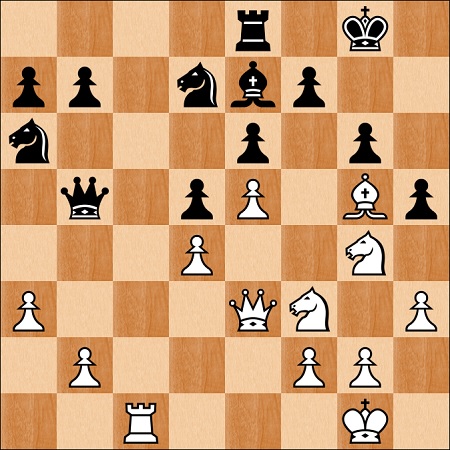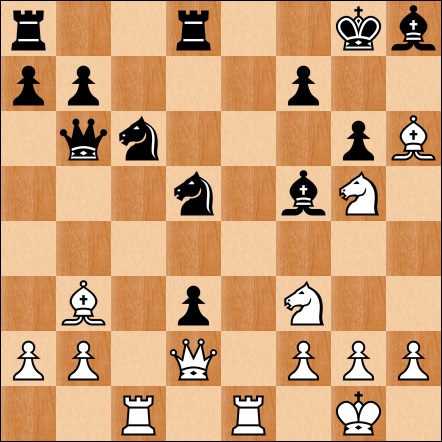One of the most important aspects of tournament play is to keep a clear head for the games. For this reason it is usually better not to prepare too much on the day of a game but instead just relax and perhaps take a walk.
This is something that people find especially difficult if they have a database and lots of their opponents games to go through, can it really be better not to study their games? I found that I did better when I just stopped worrying and prepared myself mentally for the fight ahead.
In the tournament where I made my final Grandmaster norm, the Gausdal International of 1993, I did exactly that. Gausdal is a ski resort situated in the Norwegian mountains, so every morning I took a long walk and came back in time for lunch, a quick look at the pairings and then going straight into battle. I just played chess, and managed to beat two Russian Grandmasters, Yuri Razuvaev and Naum Rashkovsky.
Here is the finish to the Rashkovsky game in which I was White; in the position in the diagram Black had just played 22...h7-h5:

What should White do here? Well using my clear head I calculated a forced win starting with 23.Bxe7 after which 23...Rxe7 fails to 24.Rc8+ Nf8 25.Qh6 threatening mate with either capturing on f8 or Nf6. So Black had to try 23...hxg4 but then 24.Qh6 threatened 25.Bf6 whilst 24...Rxe7 would be met by 25.Rc8+ followed by mate.
Rashkovsky tried one last thing with 24...Qxb2, but after 25.Bf6 resigned as even 25...Qxc1+ 26.Qxc1 does not help him as White threatens to bring his queen back to h6.
Tactical sequences like the one above will usually arise at some point in a game. This is why having a clear head is so important, you will calculate just that little bit better.
Nigel Davies

